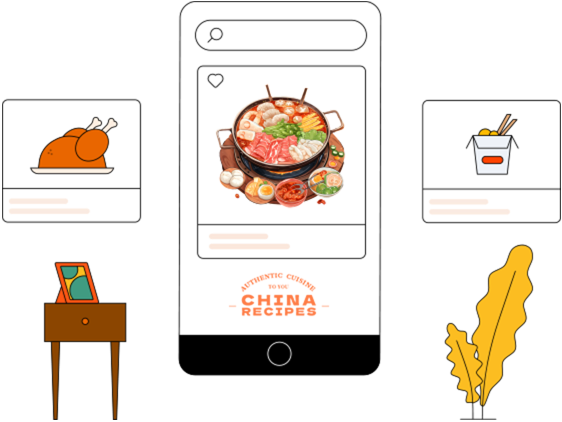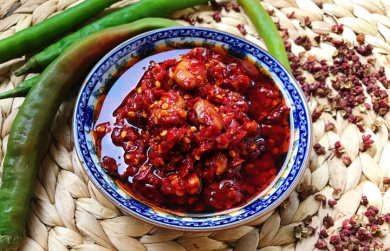How Cook Boudin: Perfect Cooking Tips

If you’ve never tried boudin, it’s about time you did! Here are some simple ways to cook this tasty sausage to perfection.
Step 1: Choose the right meat
The base of boudin is pork and offal. When selecting pork, it's best to choose a combination of lean meat and some fat, so the sausage won’t be too dry.
Pork liver is a traditional ingredient, but don’t add too much as the liver has a strong flavor. You can mix the pork and liver in a 1:1 ratio, or adjust according to personal taste.
The selected meat should be chopped into ground meat, but not too finely, as the texture of the meat will give the sausage a better bite.
Step 2: Prepare the rice
Rice is a key ingredient in boudin. The cooked rice should not be too wet or too dry.
Wash the rice with cold water to prevent the rice from becoming too sticky, and control the water to an appropriate level. After cooking, add the hot rice to the ground meat and mix well. This way, the rice grains can absorb the meat juice better, resulting in a sausage that is soft yet chewy.
The amount of rice usually makes up half of the meat mixture, but it should be adjusted based on the specific recipe and personal taste.
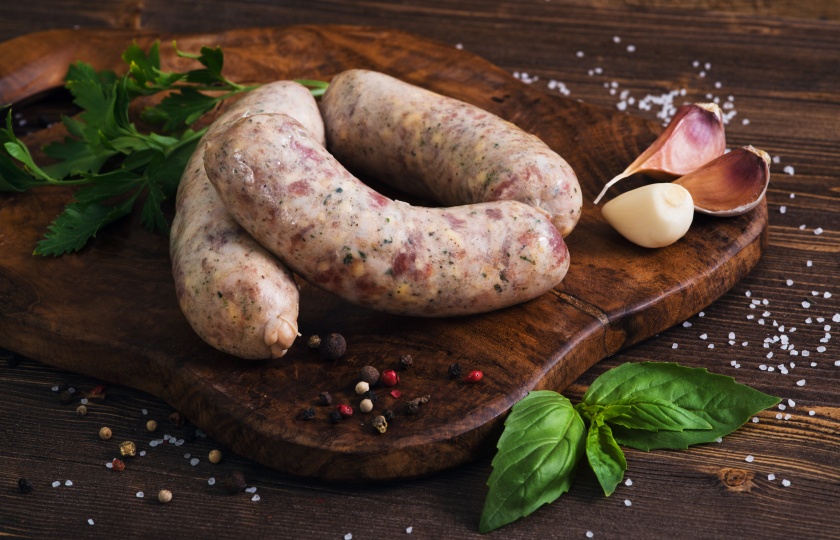
Step 3: Mastering the seasoning
Common seasonings for boudin include onion, garlic, thyme, paprika, and pepper.
Onion and garlic can be sautéed in advance until soft to enhance the flavor and avoid the pungent taste of raw spices.
The amount of thyme and pepper should be controlled well, so that no single flavor overpowers the others.
Paprika can add a bit of spiciness, but don't use too much, as it may affect the overall flavor of the sausage.
Step 4: Sausage stuffing tips
When stuffing the sausage, pay attention to the handling of the casing. Traditional pork casings should be soaked in water to soften, washed inside and out, and checked to ensure there's no off smell. If using synthetic casings, make sure to choose ones with good breathability to avoid rupture during stuffing.
Do not stretch the casing too tightly to prevent it from breaking or the sausage from being uneven. During the stuffing process, try to keep the casing relaxed, but not too loose, so that the finished sausage will have an even and neat appearance.
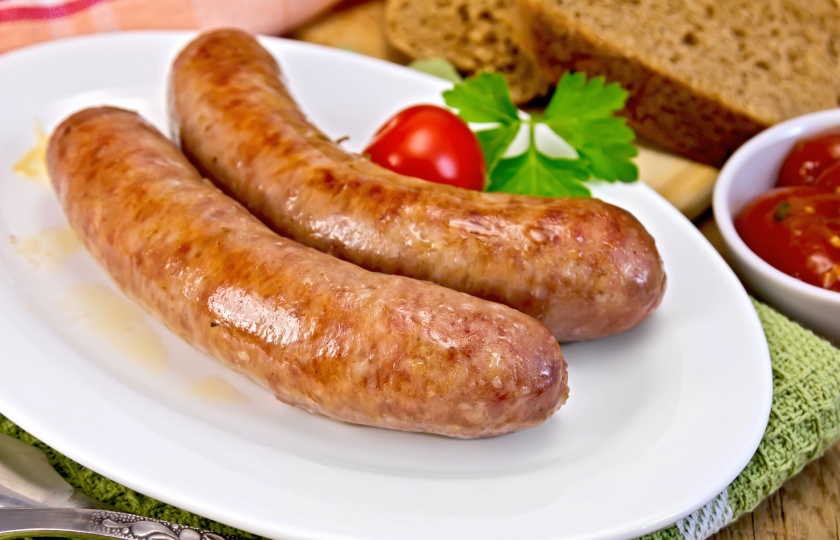
Step 5: Choosing a cooking method
There are three cooking methods for making boudin: steaming, boiling, and baking. The differences in each method will affect the texture and flavor of the sausage.
Steaming: Steaming boudin is the most traditional method, which can retain the filling's juices to the fullest. Place the stuffed sausage in a steamer and steam it on medium-low heat for about 30 to 40 minutes, until the sausage is fully cooked.
Steamed sausages have thin, soft casings and are tender and juicy inside. Be careful not to steam for too long, as the sausage may overcook and become dry and hard.
Boiling: Boiling boudin is another common method, suitable for those who prefer a softer texture. Place the sausage in hot water and simmer on medium-low heat for about 30 minutes until fully cooked.
When boiling, you can add some spices like bay leaves or cilantro to enhance the flavor. The boiled sausage will have a softer skin, delicate meat, and retain rich juices.
Baking: If you like a slightly crispy exterior, you can bake the boudin. Place the sausage in an oven preheated to 180°C (350°F) and bake for 20 to 30 minutes, until the skin becomes golden and crispy.
Baking will add a unique charred flavor, but pay attention to the temperature and time. Do not bake too long, as this will affect the internal texture and cause it to become dry.
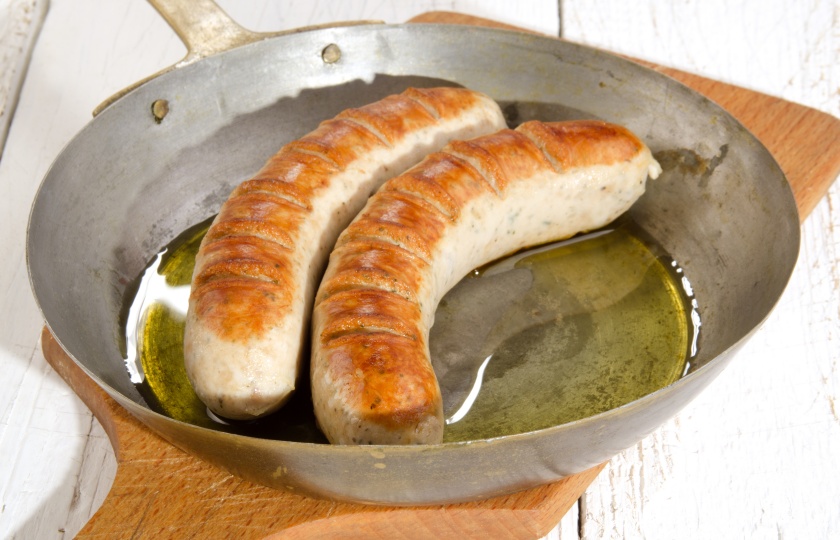
How to know if boudin is cooked?
Temperature test: Use a food thermometer to measure the internal temperature. It should reach 74°C (165°F) or higher to be considered fully cooked.
Appearance check: The casing should be intact and slightly shiny, with no obvious cracks on the surface.
Touch test: Gently press with your hand. If it feels firm and no liquid is released, it means most of the moisture has been absorbed, and it should be cooked.
Cut open check: If unsure, you can cut a small piece to see if the meat is evenly cooked through. The meat color should not be pink but should show white or slightly yellow cooked meat color.
Should I pierce boudin before cooking?
No need to pierce the boudin (French blood sausage)! In fact, it’s best not to pierce it. Boudin is usually wrapped in natural casing, and if you pierce it, the juices and flavors will escape, which may affect the texture.
If you are boiling or baking the boudin, the casing helps to keep the inside moist and flavorful, so just cook it directly. As long as you control the temperature, after cooking or baking, the casing will become crispy while the inside retains rich flavor.
If you're frying, make sure the heat is moderate, not too high, so that the outside doesn’t burn while the inside heats evenly.
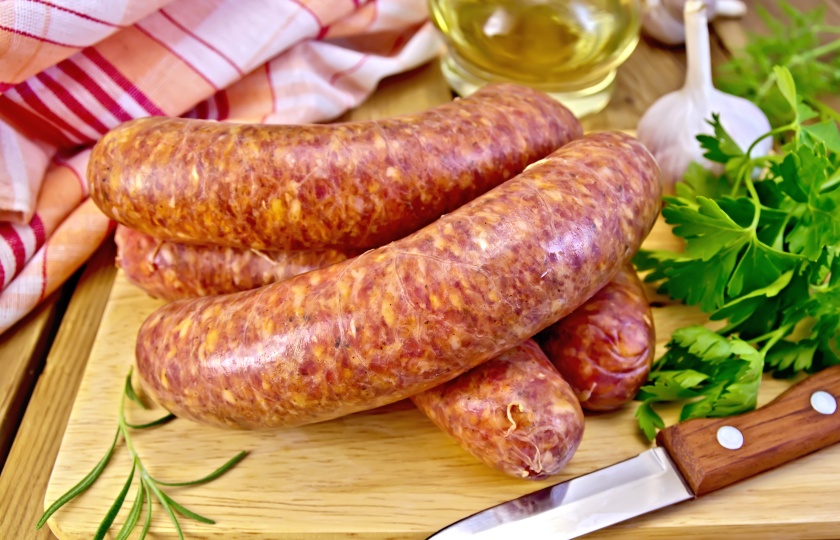
Why is my boudin mushy?
If your boudin becomes mushy, it may be due to the following reasons:
Too much rice: If the rice makes up too large a portion of the filling, it can make the boudin too wet, resulting in a soft texture. You can reduce the amount of rice and increase the proportion of meat or offal to improve the texture.
Overcooking time: If you boil or steam the boudin for too long, it will absorb too much water and become overly soft. It’s recommended to control the cooking time and not cook or steam it for too long.
Casing rupture: If the casing of the boudin ruptures during cooking, the filling will leak out, causing the inside to become mushy. Make sure the casing stays intact during cooking to avoid piercing it.
Improper temperature control: If the heat is too high, the outside may cook quickly, but the inside may remain undercooked, causing the moisture to not be sealed in, which leads to a mushy texture. Try cooking on medium to low heat to ensure even heating.
How is boudin different from sausage?
The biggest difference between boudin and sausage lies in their filling and preparation method:
Filling:
Boudin is typically made from a mixture of rice, pork, offal, and spices, often with added onion and herbs, and sometimes even seafood. Its texture is richer, like a sausage filled with rice.
Sausage, on the other hand, is usually made with meat and spices, and some sausages may include fillers (like breadcrumbs or rice), but meat is generally the main ingredient.
Preparation method:
Boudin is usually wrapped in casing and either steamed or baked, with a higher proportion of rice, making it more moist and somewhat similar to sticky rice sausage.
Sausage is often made purely from meat and cooked by grilling, frying, or boiling.
Regional differences:
Boudin is more common in Louisiana and New Orleans, especially as a traditional food within the Creole culture of Louisiana.
Sausage is found all around the world, especially in Europe, with many different varieties.





